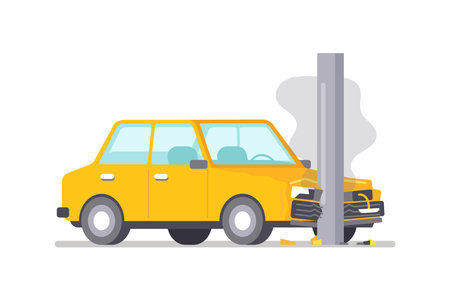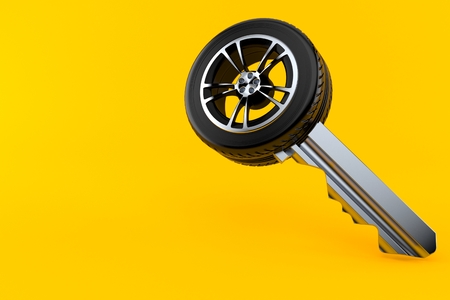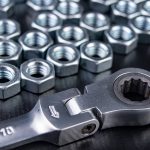1. Introduction to Transmission Systems
The transmission is one of the most crucial components in a vehicle, responsible for transferring power from the engine to the wheels. Over the years, transmissions have evolved significantly, improving performance, fuel efficiency, and overall driving experience. Understanding this transformation helps us appreciate how modern transmissions differ from older models.
The Role of Transmissions in Vehicles
A vehicle’s transmission serves a vital function in controlling speed and torque. It allows the engine to operate within an optimal RPM range while adjusting power delivery to the wheels based on driving conditions. Whether manual or automatic, transmissions ensure that the vehicle runs smoothly and efficiently.
Evolution from Older Models to Modern Designs
The design and technology of transmissions have advanced considerably over the decades. Earlier models relied on basic mechanical systems, while modern versions incorporate sophisticated electronics and software for improved efficiency. Below is a comparison between older and modern transmissions:
| Feature | Older Transmissions | Modern Transmissions |
|---|---|---|
| Gear Shifting | Manual or basic automatic with fewer gears | Advanced multi-speed automatic and CVTs |
| Fuel Efficiency | Lower due to gear limitations | Higher with optimized gear ratios |
| Electronic Controls | Limited or none | Computer-controlled systems for better precision |
| Durability | Simple and robust but less efficient | More complex but designed for longevity |
The Shift Towards Modern Technologies
Automakers have embraced new transmission technologies such as continuously variable transmissions (CVTs), dual-clutch transmissions (DCTs), and electronically controlled automatic transmissions to optimize performance. These innovations help improve fuel efficiency, reduce emissions, and enhance driving comfort.
This transition from traditional mechanical transmissions to electronically managed systems represents a significant transformation in automotive engineering. As we move forward, understanding these advancements provides insights into how modern vehicles deliver better performance and reliability.
2. Key Differences Between Older and Modern Transmissions
Automotive transmissions have come a long way over the years. Traditional manual and automatic transmissions have evolved into more advanced systems like continuously variable transmissions (CVTs) and dual-clutch transmissions (DCTs). Below, we’ll explore how these modern systems compare to their older counterparts.
1. Gear Shifting Mechanism
Older transmissions rely on fixed gears with manual or hydraulic shifting mechanisms, whereas modern CVTs and DCTs employ advanced technology to optimize performance and efficiency.
| Transmission Type | Shifting Mechanism |
|---|---|
| Manual Transmission | Driver engages gears manually using a clutch pedal and gear lever. |
| Traditional Automatic | Uses a hydraulic torque converter to shift gears automatically. |
| CVT | Uses a belt and pulley system for seamless, stepless gear ratio changes. |
| Dual-Clutch Transmission (DCT) | Pre-selects gears using two separate clutches for faster, smoother shifts. |
2. Efficiency and Fuel Economy
Modern transmissions generally improve fuel efficiency by maintaining optimal engine performance. CVTs, in particular, are designed to continuously adjust gear ratios to keep the engine operating in its most efficient power band.
Comparison of Fuel Efficiency
- Manual Transmission: Once considered the best for fuel efficiency, but now outperformed by advanced automatics.
- Traditional Automatic: Historically lagged in efficiency due to torque converter losses.
- CVT: Optimizes power delivery for superior fuel economy.
- DCT: More efficient than conventional automatics, especially in performance vehicles.
3. Driving Experience
The way a vehicle feels and responds on the road changes significantly depending on its transmission type.
| Transmission Type | Driving Experience |
|---|---|
| Manual | Offers full driver control, but requires skill and practice. |
| Traditional Automatic | Smooth and convenient but can feel sluggish compared to newer systems. |
| CVT | Seamless acceleration but may lack the “shift feel” preferred by some drivers. |
| DCT | Fast, precise shifting suited for sporty performance driving. |
4. Maintenance and Longevity
Each transmission type has different maintenance requirements and durability considerations.
- Manual: Generally the most reliable with fewer components that can fail, though clutches wear out over time.
- Traditional Automatic: Can be durable, but torque converters and fluid systems require regular maintenance.
- CVT: More complex and may wear faster due to reliance on belts and pulleys.
- DCT: High-performance but often more expensive to repair due to dual-clutch components.
Final Thoughts on Transmission Evolution
As automotive technology progresses, newer transmission designs aim to improve performance, efficiency, and the overall driving experience. While traditional manual and automatic transmissions remain popular in some markets, CVTs and DCTs continue to reshape how vehicles deliver power to the wheels.

3. Technological Advancements in Modern Transmissions
Modern transmissions have evolved significantly thanks to advancements in technology. Unlike older models, today’s transmissions offer better efficiency, smoother shifting, and smarter adaptability. These improvements are mainly due to electronic controls, adaptive shifting, and fuel efficiency enhancements.
Electronic Controls
One of the biggest changes in modern transmissions is the introduction of electronic controls. Older transmissions relied on purely mechanical or hydraulic systems, while today’s transmissions use electronic sensors and computer-controlled components to optimize performance. These electronic systems improve gear selection, reduce shift lag, and enhance overall driving comfort.
Adaptive Shifting
Modern transmissions can adjust their shifting patterns based on driving behavior and road conditions. Unlike older models that followed a fixed shifting schedule, today’s transmissions analyze factors like throttle position, speed, and load to determine the optimal time to change gears. This technology provides a smoother and more responsive driving experience.
Fuel Efficiency Enhancements
Fuel efficiency is a major focus in modern vehicle design, and new transmissions play a key role in achieving better mileage. Advancements such as continuously variable transmissions (CVTs), more gear ratios in traditional automatic transmissions, and improved torque converter designs help improve fuel economy. The table below highlights some key differences between older and modern transmissions in terms of fuel efficiency:
| Feature | Older Transmissions | Modern Transmissions |
|---|---|---|
| Number of Gears | 3-4 gears | 6-10 gears, or CVT |
| Efficiency | Lower fuel efficiency | Optimized for better MPG |
| Shifting Technology | Fixed shifting schedule | Adaptive shifting |
Thanks to these technological advancements, modern transmissions offer improved performance, a more refined driving experience, and greater fuel efficiency compared to older models.
4. Impact on Performance and Driving Experience
Improved Acceleration
Modern transmissions provide faster and more precise gear changes, resulting in better acceleration. Traditional automatic transmissions often experience noticeable lag when shifting, while modern systems—especially dual-clutch and continuously variable transmissions (CVTs)—offer near-instant shifts. This leads to a more responsive driving experience, particularly when merging onto highways or overtaking other vehicles.
Smoother Gear Transitions
One of the biggest advantages of modern transmissions is the reduction of shift shock. Older transmissions, especially those with fewer gears, tend to produce noticeable jerks between shifts. Modern automatics use advanced software and hydraulic controls to ensure nearly seamless transitions between gears, enhancing driving comfort. CVTs, in particular, eliminate traditional gear shifts altogether, providing a smooth and uninterrupted power delivery.
Enhanced Driving Dynamics
Modern transmissions contribute to a more refined and engaging driving experience. Whether you’re driving in stop-and-go city traffic or enjoying spirited driving on winding roads, modern gearboxes adjust more efficiently to driving conditions. Advanced technologies like adaptive shift logic learn driver behavior and optimize gear changes accordingly.
Comparison of Older vs. Modern Transmissions
| Feature | Older Transmissions | Modern Transmissions |
|---|---|---|
| Acceleration | Slower response, noticeable shift gaps | Faster shifts, seamless transitions |
| Shift Smoothness | More pronounced gear changes | Smoother, near-imperceptible shifts |
| Driving Dynamics | Less adaptive to conditions | More intelligent and responsive |
These advancements make modern transmissions not only more efficient but also more enjoyable to drive, whether for daily commutes or high-performance scenarios.
5. Maintenance and Longevity Considerations
Modern transmissions have come a long way in terms of efficiency, but they also bring new maintenance requirements compared to older models. Lets take a look at how they differ in terms of upkeep, common issues, and overall longevity.
Comparison of Maintenance Requirements
Traditional transmissions, such as manual and early automatic models, required more frequent fluid changes and adjustments. Modern designs, including CVTs and dual-clutch transmissions, often use specialized fluids and, in some cases, claim to be “lifetime fill,” though regular maintenance is still recommended.
| Transmission Type | Maintenance Frequency | Common Fluids Used |
|---|---|---|
| Older Manual Transmission | Every 30,000 – 60,000 miles | Gear oil |
| Older Automatic Transmission | Every 30,000 – 50,000 miles | ATF (Automatic Transmission Fluid) |
| Modern CVT | Every 60,000 – 100,000 miles | Specialized CVT fluid |
| Dual-Clutch Transmission (DCT) | Every 40,000 – 80,000 miles | Specific DCT fluid |
Common Issues in Older vs. Newer Transmissions
Older transmissions, especially manual ones, were simpler and could last long if properly maintained, but they required periodic clutch replacements. Traditional automatic transmissions could develop problems like slipping gears and rough shifts over time.
Modern transmissions, while efficient, sometimes face unique problems. CVTs, for instance, are known to wear out prematurely without proper fluid changes, and DCTs can experience lag or jerky shifting at low speeds.
Reliability and Longevity Considerations
Overall, the longevity of a transmission depends on maintenance and driving habits. Older manual transmissions often last longer due to their mechanical simplicity, while modern automatics and CVTs require precise servicing.
Key Takeaways
- Older transmissions required more frequent but simpler maintenance.
- Modern transmissions often have lifetime fluids but still benefit from servicing.
- CVTs and DCTs require specialized care to avoid costly repairs.
- Proper maintenance can significantly extend a transmissions lifespan.
Understanding these differences helps vehicle owners make informed decisions about their car’s upkeep and avoid costly issues down the road.


